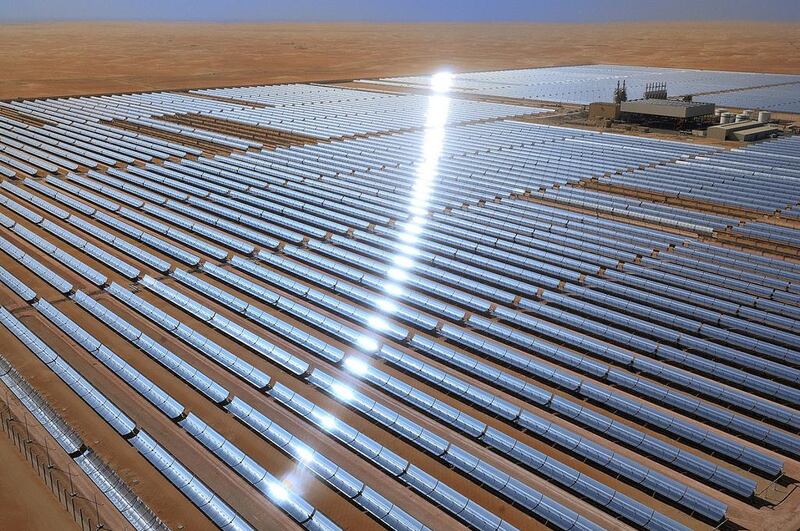A map showing the growth of clean-energy projects in the region over the past three years highlights the extensive progress the UAE is making in solar power.
It charts the details of 198 projects in the GCC, the Levant and North Africa, which between them are worth about US$3 billion (Dh11bn) with an installed capacity of 1,700 megawatts.
However, such projects still provide less than one per cent of the region’s electricity needs.
"Compared to the total power capacity in the region, it is absolutely tiny," said Daniel Zywietz, managing director of Ambata Capital Middle East and CEO of Enerwhere, a Dubai-based provider of off-grid energy solutions, who compiled the map with the help of the Clean Energy Business Council, a not-for-profit company based in Masdar City, and presented it at an event yesterday.
While many of the projects are wind power initiatives in North Africa, the map also shows the major inroads the UAE has made into the development of solar power – the country now accounts for more than half of the GCC’s and Levant’s solar power capacity.
“There are actually something like 20 major projects that were commissioned over the past 11 months and we still have several more under construction, some of which might still be commissioned this year,” said Mr Zywietz.
“What we are seeing going forward, the activity is actually dramatically increasing.
“If we look back at how many tenders and projects were being planned one year ago and compare [that] to how many are under tender and being planned now, it has doubled or tripled and this is primarily because of activity in the UAE and Jordan.”
In Jordan, the high cost of conventional energy makes solar power attractive but in the UAE other drivers are also in play. Solar power, Mr Zywietz said, “has become nearly the standard for public buildings in the UAE”.
“It has become part of the theme to include renewable energy both in the form of photovoltaic for electricity generation, and even more so in regards to hot water production with solar thermal,” he said.
Utility companies are also developing solar projects, while a third area of growth is what Mr Zywietz referred to as “the off-grid sector” – projects in remote parts of the country that lack access to grid power and have to rely on diesel to provide their energy needs.
Developments in solar technologies mean that producing electricity in off-grid locations is now less expensive than using diesel, and companies and private individuals are now taking advantage of this, Mr Zywietz said.
“There are at least five islands [off Abu Dhabi] that already run on solar or that are being converted to solar,” he said. “Similarly, in the Northern Emirates you see multiple projects.”
Coupled to planned solar rooftop programmes for individuals and large utility projects expected to be announced next year, the UAE’s solar industry has a bright future, Mr Zywietz said.
“The structure of the market is changing and that is just as important to the development of the solar industry as are the headline numbers,” he said.
“For the industry, the willingness to invest is not only driven by market size, it is also driven by the risk of not being able to sell anything at all.
“And the more small and medium-sized projects you have, the more diverse the market is, the bigger the chance that, if you make an investment you can compete on an even scale and it is not one shot where you either win or lose.
“I see a sustained market development that is not driven by just one institution.
“This is multiple government institutions, multiple emirates, more and more private-sector customers buying.”
The map is available to the public at: www.cleanenergybusinesscouncil.com/en/map/
vtodorova@thenational.ae





